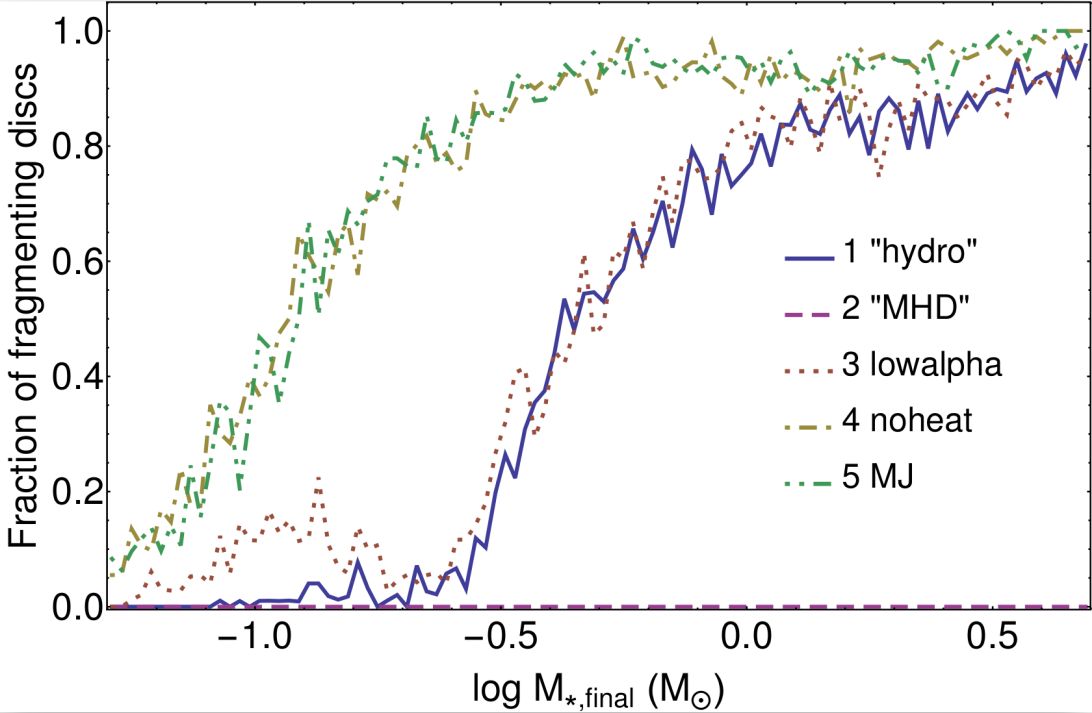DIPSY: A New Disc Instability Population Synthesis
- 1University of Bern, Physics Institute, Space Research and Planetary Sciences, Bern, Switzerland (oliver.schib@space.unibe.ch)
- 2University of Zurich, Institute for Computational Science, Zurich, Switzerland
Disk instability remains the leading formation pathway for some of observed giant planets. In particular, this model can more naturally explain giant planets at large separation, giant planets around M stars, and very young giant planets. However, there are still many open questions regarding this formation mechanism, and the expected population of planets.
We are working on a new disc instability population synthesis (DIPSY) that aims to address these questions and make predictions about the expected population of planets that can be tested observationally.
We find that fragmentation (the formation of bound clumps in the disc, a necessary condition for planet formation in the disc instability model) depends sensitively on the precise physics during the disc formation (infall). We show that infall models that form discs compatible in size with observed young discs are likely to fragment, though this may happen only in a minority of systems. Furthermore, we demonstrate how the intrinsics of orbital migration, mass accretion and clump interaction influence the fate of the formed clumps.
The figure shows the fraction of systems that fragment as a function of the final stellar mass for different parameters studied [1].
The results of the population synthesis, combined with current and future observations, will deepen our understanding of planet formation irrespective of the formation model.
 Fig. 1: Fraction of fragmenting discs as a function of the final stellar mass for different parameters. When an infall model motivated by non-ideal MHD simulations is applied, no fragmentation occurrs. In contrast, infall informed by radiation hydrodynamic simulations leads to a substantial fraction of discs fragmenting, especially at higher masses.
Fig. 1: Fraction of fragmenting discs as a function of the final stellar mass for different parameters. When an infall model motivated by non-ideal MHD simulations is applied, no fragmentation occurrs. In contrast, infall informed by radiation hydrodynamic simulations leads to a substantial fraction of discs fragmenting, especially at higher masses.
References:
[1] Schib, O., Mordasini, C., Wenger, N., Marleau, G. D., & Helled, R. 2021, Astronomy and Astrophysics, 645, A43
How to cite: Schib, O., Mordasini, C., and Helled, R.: DIPSY: A New Disc Instability Population Synthesis, Europlanet Science Congress 2022, Granada, Spain, 18–23 Sep 2022, EPSC2022-50, https://doi.org/10.5194/epsc2022-50, 2022.

